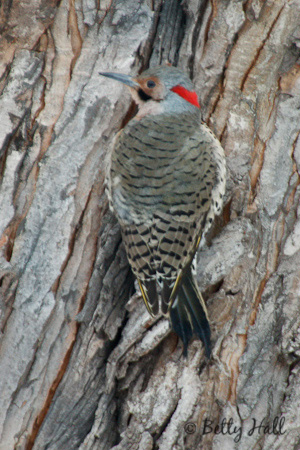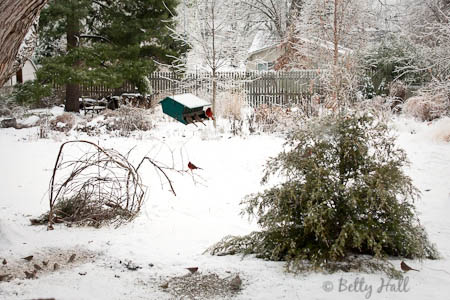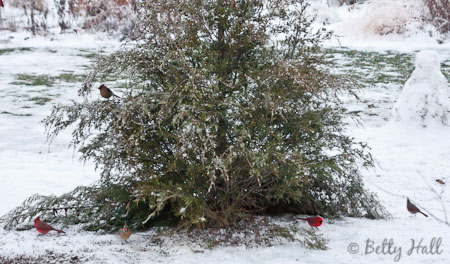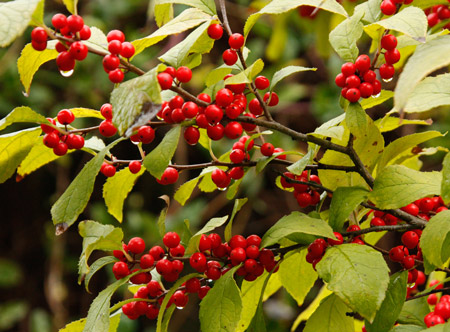It was a special treat last week to watch a northern flicker (Colaptes auratus) on the silver maple. We only see them occasionally. The black “mustache” indicates this one was a male.
He was hunting for insects among the many cracks and crevices of the bark. It’s hard to imagine there was much to find, but I understand there are lots of winter insects hidden in tree bark, under leaves, and in dead plant stalks. I’m amazed to think that eggs, small caterpillars, chrysalises, and adult insects can survive the cold.
I enjoyed a recent article on winter insects by Dr. Douglas Tallamy published in the Wild Ones Journal. It reminds me of the importance of insects and how I can contribute to their chances for surviving the winter months. The growth from last year’s garden looks scraggly now, and that’s OK with me. I appreciate it as a nursery for next summer’s butterflies and other insects.











